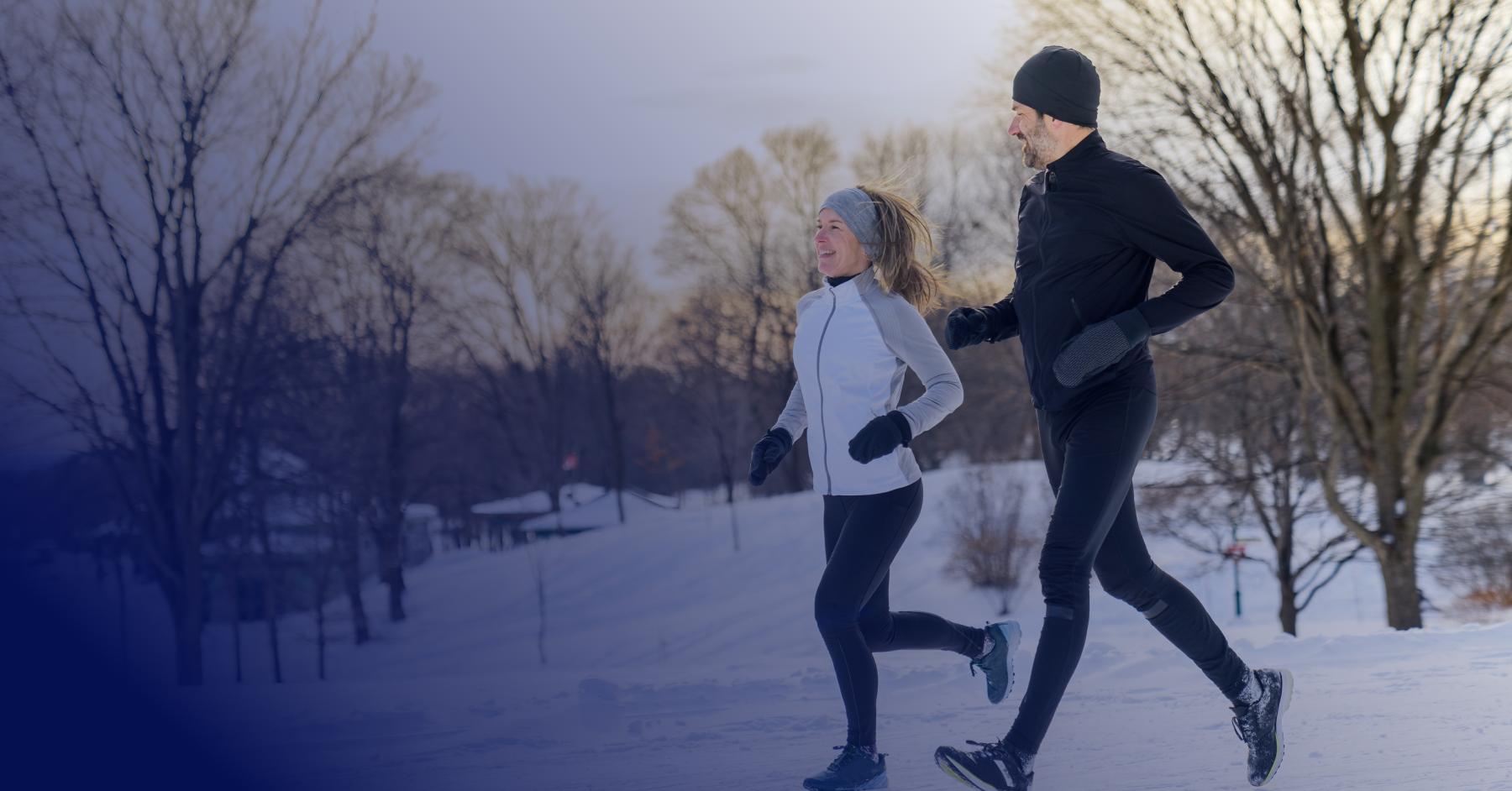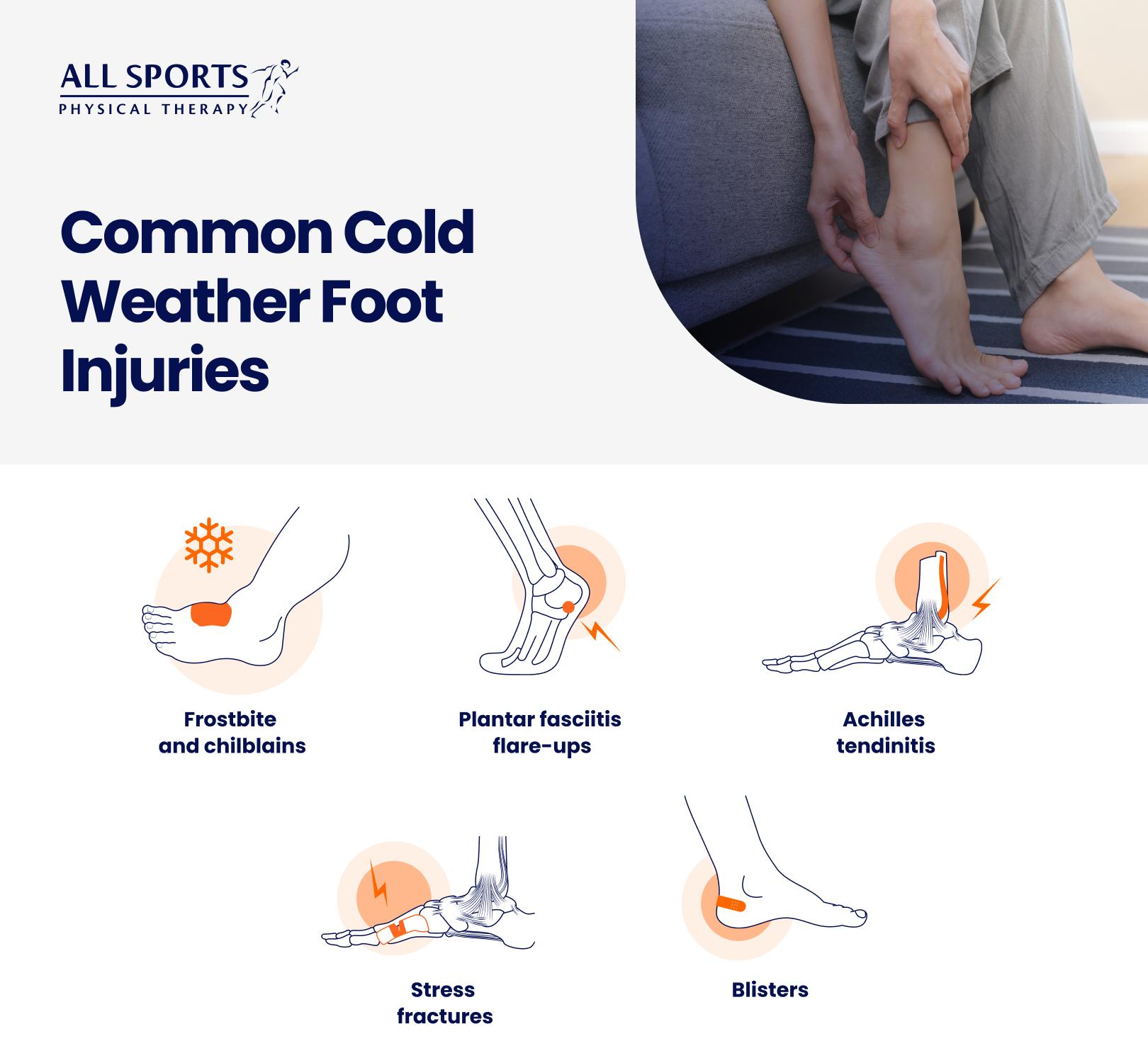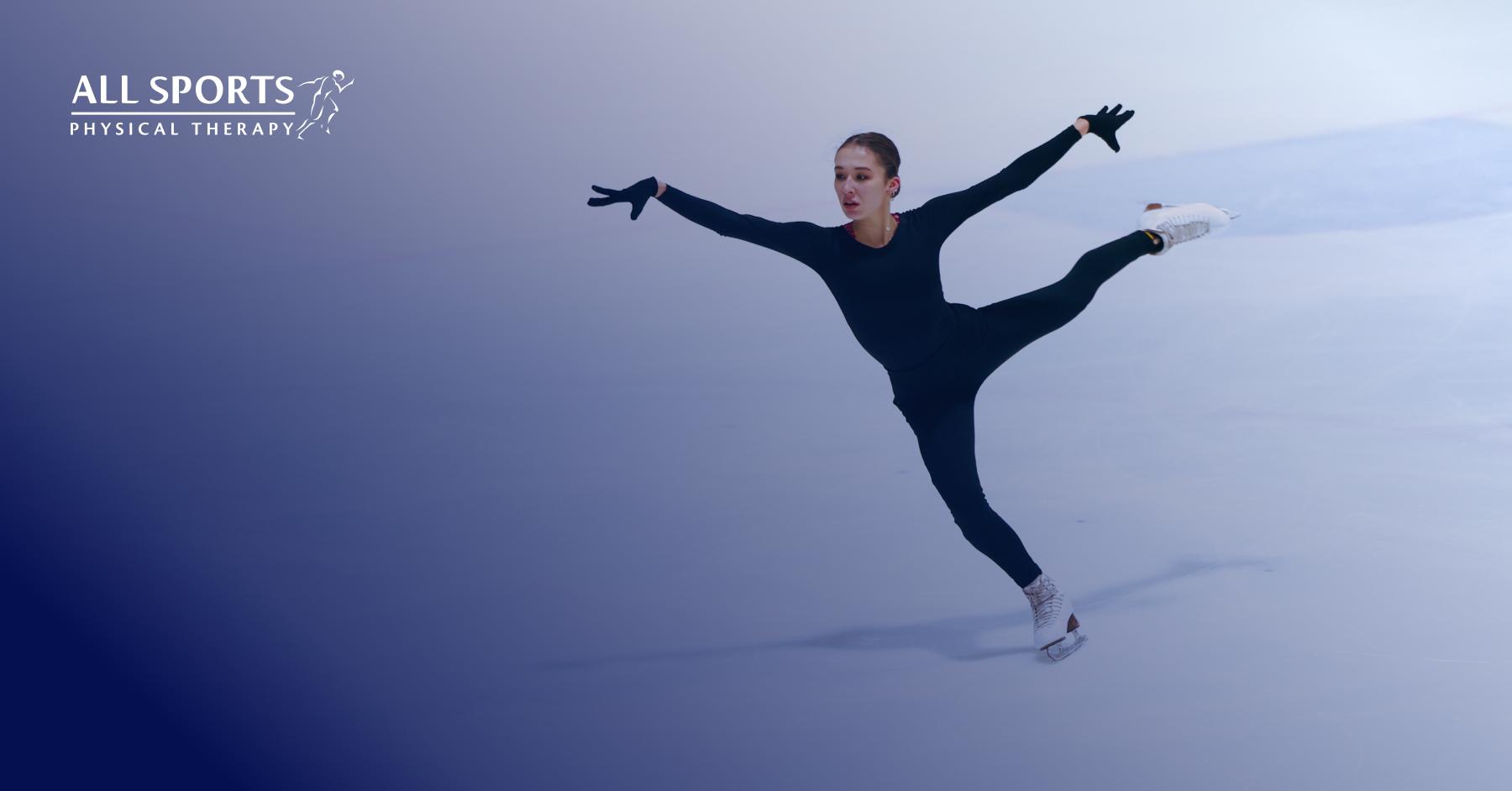A Runner’s Guide to Foot Injuries in Cold Weather
Foot Injury, Workout Injuries, Sports Medicine

Learn how to prevent common cold-weather foot injuries and stay safe, warm, and active through chillier seasons.
When the temperatures drop, even the most dedicated runners may be tempted to put their running shoes in storage, reach for the comfy blanket, and pine for warmer weather before hitting the trail. But why wait? Running in cold weather can actually boost your mood, burn more calories, and help you stay fit all year long. In fact, studies show the ideal running temperature is between 40°F and 59°F, perfect for winter training.
Of course, chilly weather brings some extra challenges. Cold air slows your circulation and makes muscles and tendons less flexible, which can increase your risk of injury. Icy or uneven surfaces can also raise your chances of slipping or falling. Still, with the right shoes, gear, and precautions, you can keep running safely no matter the season.
Why cold weather affects your feet
Cold temperatures don’t just make your hands and toes feel numb; they actually change how your body moves and performs. When your muscles tighten in the cold, they lose flexibility, which can make you more prone to strains and sprains. Here are other ways winter weather can affect your feet:
- Reduced blood flow. When it’s cold, your body prioritizes keeping your core warm, which limits blood flow to your hands and feet. This can cause stiffness, soreness, and slower healing after workouts.
- Increased pain sensitivity. Cold air can make your nerve endings more sensitive, so minor aches might feel sharper or more painful.
- Changes in stride. To stay steady on icy terrain, you might take shorter steps or lean back slightly, which changes how your muscles work and can cause strain in your thighs, hips, and feet.
- Higher risk of foot injuries. Wet socks or shoes can lead to painful blisters, corns, or even fungal infections if moisture isn’t wicked away properly.
What are some common foot injuries in cold weather?
Winter running injuries often come down to stiffness, tightness, and improper footwear. Here are some of the most common foot issues we see this time of year:

1. Frostbite and chilblains
When blood flow to your toes slows down in freezing temperatures, frostbite can occur, causing pain, numbness, swelling, and even blisters. Chilblains are similar but happen with milder cold and dampness, leading to red, itchy, or blistered skin.
2. Plantar fasciitis flare-ups
Cold temperatures tighten the plantar fascia (the thick band of tissue along the bottom of your foot) making existing heel pain worse. If you feel that familiar ache under your heel, it’s time to rest and see a podiatrist.
3. Achilles tendinitis
Similar to plantar fasciitis, Achilles tendinitis is an inflammation of the Achilles tendon that connects your heel to the back of your leg. Repetitive running movements can aggravate this tendon, causing pain and swelling along the back of the ankle.
4. Stress fractures
Cold-weather running can change your stride, especially when you’re trying to stay balanced on slippery or uneven ground. That shift can put extra stress on the small bones in your feet, sometimes leading to tiny cracks called stress fractures. They may start off as mild soreness but can worsen into persistent pain and swelling. If you suspect a stress fracture, see a podiatrist; they can confirm it with an X-ray and help you heal safely.
5. Blisters & toenail damage
Moisture and friction from cold-weather runs can cause painful blisters, while tight or poorly fitted shoes can lead to “runner’s toe,” where pressure darkens or loosens the toenail. To prevent both, wear moisture-wicking socks, choose shoes that fit comfortably with enough toe room, and use an anti-friction balm on areas prone to rubbing.
How do I prevent common running injuries in winter?
Cold weather running can lighten your mood in the darker months and help you maintain your physical health at a time when most retreat indoors. Stay on track by following these tips to prevent common cold weather running injuries:
Warm up first
Heading out cold into the cold is a recipe for tight muscles. Spend at least 5–10 minutes doing dynamic stretches like ankle rolls, calf raises, and a light jog to get your blood flowing before you hit the pavement.
Choose the right winter running gear
Start at your feet with a good pair of moisture-wicking socks, made from merino wool or synthetic material. Avoid cotton socks that tend to retain moisture. For extra insulation, slip on a pair of neoprene toe warmers over your socks.
Next, choose water-resistant footwear with good traction and insulation to handle snow and slush.Most importantly, make sure your shoes fit properly. Tight shoes can reduce blood flow and cause painful blisters or muscle tightness, while loose ones can increase friction and rubbing.
Adjust your running form and surfaces
To safely navigate slippery surfaces, shorten your stride to maintain your balance and avoid slips and falls. One study reported that reducing stride length by as little as 10% cut down on stress fracture risk, tibial strain, and musculoskeletal loads.
Take a safety-first approach when running in winter. If the weather is too forbidding (extremely cold, snowy, with little visibility) take your run to cleared paths or an indoor track. Start slow and gradually build up your distance and pace.
Recognize warning signs and know when to rest
The most important rule for injury prevention? Listen to your body. Knowing your limitations can keep you injury-free, so keep an eye on these signs telling you to slow down:
- Persistent soreness, swelling or numbness that lasts for more than a few days
- Toes or other extremities that turn blue or feel numb
- Muscles that feel unusually stiff or tight
If you can’t comfortably put weight on your foot, see an orthopedist to rule out a serious injury.
Keep on running with All Sports Physical Therapy
Running in cold weather can lift your mood and keep you strong through the darker months, but it also comes with a few extra risks. Without the right gear and precautions, painful blisters, stiff feet, or even frostbite can sneak up on you.
If you’ve noticed pain after a winter run—or just want to stay one step ahead of injuries—the team at All Sports Physical Therapy is here to help. We’ll get you back on track (or trail) safely, no matter the temperature. Contact us today to schedule a visit.
FAQs
Are running injuries more common in winter?
Not necessarily. Injuries occur due to a variety of factors outside of just environmental changes. However, sprains, blisters, and other injuries may be more likely in winter due to slippery surfaces and stiff muscles. With proper warm-ups, footwear, and preparation, most winter running injuries are completely avoidable.
What are the disadvantages of running in the cold?
Cold temperatures cause blood vessels in your feet and toes to constrict, which can make your muscles feel tight or stiff. Add icy or slick surfaces into the mix, and your risk of slips, falls, and fractures increases.
Does running in the cold have health benefits?
Yes! Cold-weather running can actually burn more calories because your body works harder to stay warm. Plus, cooler temperatures mean you won’t overheat as easily, making it easier to maintain a consistent pace. Running outdoors in winter can also help boost your mood and fight of any seasonal blues.
Why do my feet hurt so bad in the winter?
Cold weather can tighten the muscles and tendons in your feet, triggering or worsening plantar fasciitis (heel pain) or Achilles tendinitis. Running with improperly fitted shoes can also lead to pain, stress fractures, or general soreness. If your feet ache consistently, it may be time to check your footwear or see a specialist.
Does running in the cold increase endurance?
It might take a little longer to warm up and your pace may feel slower at first, but don’t worry—your body is still working hard. Running in the cold can actually build endurance over time as your body adapts to tougher conditions. Start slow, layer up, and gradually increase your distance as you get comfortable.



